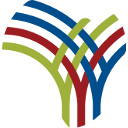Although access to safe drinking water in rural areas has risen from 50 to 60 per cent between 2015 and 2024, coverage in urban areas has stagnated.
A new report has shown that despite progress in expanding access to water and sanitation over the last decade, one in four people globally still do not have access to safely managed drinking water.
The report titled, “Progress on Household Drinking Water and Sanitation 2000-2024: Special Focus on Inequalities” was launched by the World Health Organisation (WHO) and the United Nations Children’s Fund (UNICEF) during World Water Week 2025.
The report shows that about 2.1 billion people remain without essential water, sanitation, and hygiene services, leaving them exposed to disease and social exclusion.
Keep up with the latest headlines on WhatsApp | LinkedIn
World Water Week
World Water Week, organised annually by the Stockholm International Water Institute (SIWI), is regarded as the leading global forum on water and related development issues.
It usually brings together policymakers, researchers, civil society groups and private sector actors to deliberate on how to tackle the world’s most pressing water challenges.
The 2025 edition, which is ongoing, is being held from 24-28 August in Stockholm, with opportunities for virtual participation.
This year’s gathering is focused on the theme “Water for Climate Action,” highlighting water’s critical role in both mitigating and adapting to climate change, while calling for stronger commitments to protect vulnerable populations.
Disparities remain
The report findings revealed that people living in low-income countries, fragile settings, and rural communities, as well as children, ethnic minorities and indigenous groups, face the deepest inequalities.
Although access to safe drinking water in rural areas has risen from 50 to 60 per cent between 2015 and 2024, coverage in urban areas has stagnated. Meanwhile, 106 million people still drink directly from untreated surface water sources.
According to the findings, 3.4 billion people worldwide still lack safely managed sanitation, with 354 million practising open defecation, while 1.7 billion people lack basic hygiene services at home, including 611 million who have no facilities at all.
Girls disproportionately affected
The data also highlighted the gendered burden of water access.
In many parts of sub-Saharan Africa and Central and Southern Asia, women and girls remain primarily responsible for water collection, with many spending more than 30 minutes daily fetching water.
A lack of safe water, sanitation and hygiene also has direct consequences for children’s health, education and development. Adolescent girls, in particular, face additional challenges during menstruation.
Data from 70 countries show that while most girls and women have some form of menstrual material and a private place to change, many cannot change as often as necessary.
As a result, adolescent girls aged 15-19 are less likely than adult women to participate fully in school, work and social activities during their periods.
Global goals at risk
With only five years left to achieve the Sustainable Development Goals (SDGs), WHO and UNICEF warn that the target of universal coverage of safely managed water, sanitation and hygiene services by 2030 is increasingly out of reach.
Ruediger Krech, the acting director for environment, climate change and health at WHO, said water, sanitation and hygiene are not privileges but basic rights.
Mr Krech noted that urgent action is needed to close the gap for the world’s most vulnerable communities.
“We must accelerate action, especially for the most marginalised communities, if we are to keep our promise to reach the Sustainable Development Goals,” he said.
Similarly, Cecilia Scharp, the director of water, sanitation and hygiene at UNICEF, stressed that the absence of safe water places children at serious risk.
Ms Scharp noted that the situation has particularly dire consequences for girls, who are forced to shoulder the burden of water collection and face additional barriers during menstruation.
“When children lack access to safe water, sanitation, and hygiene, their health, education, and futures are put at risk. These inequalities are especially stark for girls, who often bear the burden of water collection and face additional barriers during menstruation”.
“At the current pace, the promise of safe water and sanitation for every child is slipping further from reach, reminding us that we must act faster and more boldly to reach those who need it most,” she said.
Nigeria’s WASH crisis
Water, Sanitation and Hygiene (WASH) refers to essential services that ensure access to safe drinking water, proper sanitation facilities, and the ability to practise good hygiene.
In 2018, the federal government declared a state of emergency in the WASH sector, with an estimated 60 million people living without access to basic drinking water, according to the World Bank Group.
The World Bank noted that women and girls bear the burden of water collection, often walking long distances to fetch water, a task linked to school dropouts, poor health, and increased exposure to gender-based violence.
Further evidence from the 2021 WASH National Outcome Routine Mapping (WASHNORM) survey, conducted by the Federal Ministry of Water Resources and the National Bureau of Statistics with support from UNICEF, the World Bank and WHO, paints an alarming picture.
The survey revealed that about 48 million Nigerians still practise open defecation, while only eight per cent of the population engage in safe handwashing.
In addition, 23 per cent of citizens do not have access to basic water supply services, and only 10 per cent have access to basic WASH services combined.
While modest progress has been made through initiatives such as the Clean Nigeria Campaign, experts warn that the country is unlikely to achieve its target of an open defecation-free Nigeria by 2025 without greater investment and political will.
The WASHNORM survey emphasised that collecting routine data is critical for evidence-based planning, budgeting, and resource mobilisation to accelerate Nigeria’s progress towards achieving the Sustainable Development Goals on water and sanitation by 2030.




